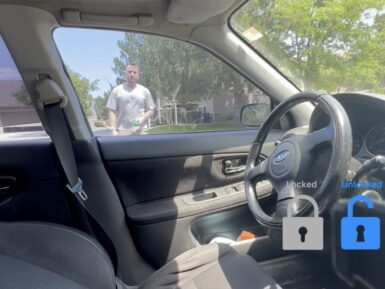
Gravity: Non-contact Digital Water / Liquid Level Sensor For Arduino
Sold outBe the first one trying the Gravity: Non-contact Digital Water / Liquid Level Sensor For Arduino!
Overview
This is a non-contact water / liquid level sensor for Arduino. It utilizes advanced signal processing technology by using a powerful chip (XKC-Y25-T12V) with high-speed operation capacity to achieve non-contact liquid level detection.
No contact with liquid makes the module suitable for hazardous applications such as detecting toxic substances, strong acid, strong alkali, and all kinds of liquid in an airtight container under high pressure. There are no special requirements for the liquid or container and this liquid sensor is easy to use and easy to install.
Get Inspired
Robot using Arduino Nano 33 BLE Camera Shield.

A lot of newer cars have a really nifty feature called “proximity unlock,” which automatically unlocks the doors when the driver approaches while carrying their key fob. When paired with a push-to-start ignition switch, the driver never has to take their keys out of their pocket. But Nick’s 2004 Subaru STI is too old to have come with that feature from the factory, so he used a couple of Arduino boards to create a DIY proximity unlock system. Car manufacturers need to pay serious attention to security when designing their access and ignition systems, but Nick had a bit more freedom. It is unlikely that any thieves would suspect his car of possessing a feature like this and so they wouldn’t even bother trying to hack it. Nick’s proximity unlock works by evaluating the received signal strength indicator (RSSI) of Bluetooth® Low Energy connection. If all else is equal, RSSI is inversely proportional to distance and that makes it useful for rough proximity detection. An Arduino Nano 33 BLE inside the car unlocks the doors when it has an active BLE connection with an RSSI over a set threshold. It unlocks the doors by shorting the switch with a 12V relay and it receives power from the car’s 12V system through a buck converter. The driver-carried device (equivalent to a key fob) can be either another Nano 33 BLE or Nick’s smartphone. In fact, it can be any device with a BLE adapter, so long as it can connect to the in-car Arduino with the proper device name. Now, Nick can enjoy his classic car and the convenience of proximity unlock.






